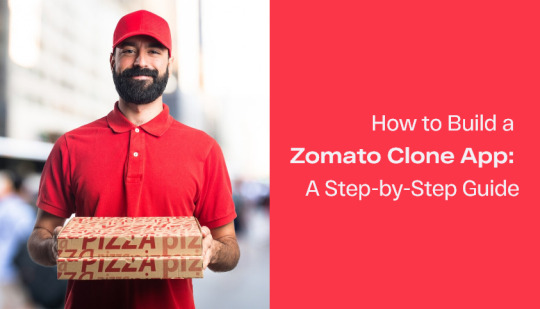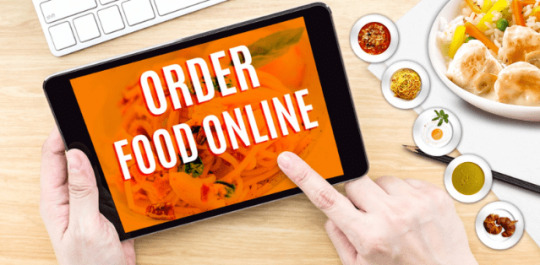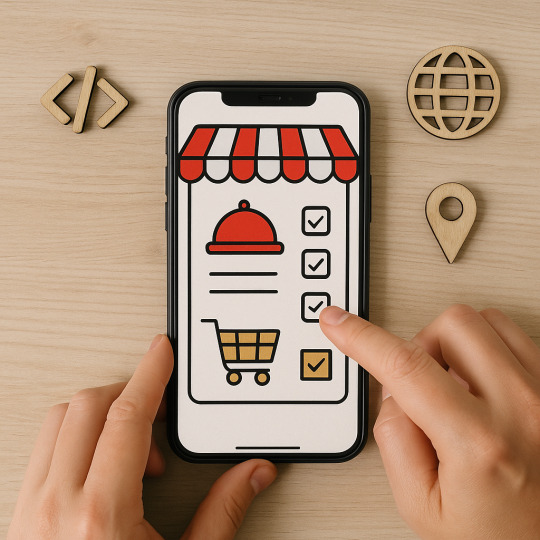#online ordering system software
Explore tagged Tumblr posts
Text
5 Best Restaurant Management Software Reviews for 2025
Are you looking for the best restaurant management software?

In this tech-driven era, utilizing feature-rich restaurant management software is crucial for small businesses to stay ahead of their competitors. To keep pace with the constant technical advancements and ever-evolving customer preferences, most restaurant owners rely on restaurant management tools that not only streamline their restaurant operations but also help improve sales.
Managing day-to-day restaurant operations can be challenging. However, for many years, restaurants have been struggling with manual logs, lots of spreadsheets, and ordinary point-of-sale systems to keep things in order. This results in missed orders, poor task management, and lots of stress.
If you, too, are dealing with the same issue, this article will be very helpful for you, as we have shared 5 of the best restaurant management software reviews here to help you pick the right one for your business and modernize your restaurant management system.
What is restaurant management software?

Restaurant management software or a restaurant POS system is designed to automate all restaurant operations, order & delivery tracking, generating invoices, storing customer details, offering discounts, food menu management, restaurant reviews, and more. In simple words, it creates the foundation of your restaurant business. A good restaurant POS system will drive your sales and give you a lot of opportunities to grow your restaurant business.
If you still do not use a restaurant management system, let us tell you why your business needs it.
Why do you need restaurant management software?

Best Restaurant Management Software automates major restaurant operations, offering you a stress-free business management experience and happy customers.
Other benefits of using restaurant management software include:
Order management: Starting from accepting orders to processing them and tracking delivery, the entire process is automated with a restaurant management system.
Table booking management: You can easily manage table reservations, table availability, seating arrangements, and more to optimize space and increase revenue.
Handling customer data: When customers place orders with your POS system, it automatically saves crucial information that you can utilize to offer personalized experiences to them.
Improves user experience: With online ordering, payment security, a loyalty program, and systematic task management, your customers feel satisfied.
Data-driven marketing decision: A POS system offers useful data and reports on your sales and evaluates your overall restaurant performance to help you make data-driven decisions.
Menu management: Add a striking menu and easily add, edit, or delete food items from it.
Cost optimization: Proper menu management, loyalty program, and simplified order management help optimize costs.
Reduced errors: Tech-driven order, delivery, and customer data management reduce the chances of error and provide you with an accurate picture of your restaurant’s performance.
These are the basic advantages of using a restaurant management system. When you choose the best for you, your business will experience more benefits.
Selecting the best restaurant management software: features to look for

Best restaurant management software features
When you search for the best restaurant management software for your restaurant, you will find an overwhelming number of options that are sure to confuse you. So, how to pick the best one? The answer lies in the features of a restaurant POS system.
Find out the must-have features for a restaurant management system:
Security
Your restaurant POS system regularly deals with confidential customer information like their payment details, contact information, etc, and ensuring their security should be a priority to build trust and credibility. Ensure that the restaurant software you choose has end-to-end encryption and a secure payment system.
Speed
One of the most important factors of the best restaurant management software is its speed. It must be able to work efficiently during rush hours when the order flow usually doubles. If the system slows down or crashes, then it could pose a serious challenge to your operational efficiency and business reputation. While scrutinizing event management software, do not forget to check its speed and its ability to handle pressure.
Scalability
Scalability is extremely important for a restaurant management solution to stay aligned with the changes that take place. Whether it is about managing restaurants from different locations or adding new features, your software must be able to deliver that without affecting the performance.
Mobile Accessibility
Make sure that the restaurant POS system you choose offers you the flexibility to manage your restaurant operation through your mobile phone. Opening a desktop for minor works can be a hassle. Tracking orders, deliveries, customer data, table registration, and more through phones is extremely beneficial and convenient.
Table booking management
Table reservation is a crucial part of a restaurant, and that is why, while filtering restaurant management software, look for a restaurant management system that offers a table booking system.
Order and delivery management
A restaurant POS system is incomplete without an online ordering and delivery management system. Search for a restaurant menu software that provides you with 100% admin control over the orders and delivery management.
Technical support
Technical support ensures that everything runs smoothly. Opt for a restaurant management system that offers technical support when required. This is important because if you face any technical issues, they can solve them promptly.
Reporting and analytics
Reports and analytics help you measure the performance of your restaurant. It throws light on sales, employee performance, and customer preferences to help you make major decisions for growth.
5 Best Restaurant Management Software Reviews
We have picked the 5 best restaurant management software after evaluating them on the basis of the above-mentioned points and reviewed each of them to help you understand them better and choose the most suitable one for your business.
1. FoodMato

FoodMato is one of the best restaurant management software programs that you can rely on for your small, medium, or established restaurant business. It is an all-in-one restaurant POS system that covers everything from online ordering and delivery to menu management, marketing, and an easy-to-use mobile app to manage the entire system at your fingertips.
Key features of FoodMato
Restaurant website creation and branding.
Seamless order management and delivery tracking.
Stress-free restaurant reservation system.
Creation of food menu and its management.
Freedom to handle multiple restaurant operations from a centralized platform.
Reports and analytics on restaurant sales, orders, and overall performance.
Google Maps integration to display restaurant locations.
Loyalty program for customer retention.
Restaurant marketing with social media community management.
Restaurant review system to increase credibility.
Sincere and timely support.
Third-party integrations.
Restaurant gallery to showcase your restaurant’s ambiance.
The best part about FoodMato is that it covers all essential restaurant management features, and it can be customized as per individual business requirements.
Pros of FoodMato
Offers a comprehensive solution
Affordable pricing.
Prompt response from the support team.
Offers full control to the admin.
A wideegtecccg3grvfcrv array of features.
Amazing reviews.
The FoodMato team works according to unique business needs.
No technical knowledge is required.
Cons of FoodMato
Not many reviews are available as it is a newly launched software.
2. OpenTable

The second in our list is the OpenTable software, which is known for its excellent restaurant reservation system. The POS system offers a vast array of services to restaurants, including table reservations, table management, restaurant booking, inventory management, and more.
Key features of OpenTable
Organize private dining events with enhanced visibility.
Restaurant management with a mobile app.
Restaurant reservation system with tags, booking, and waiting list facilities.
Offers guest data security.
The online waiting list is for guests to avoid congestion at the restaurant front door.
Reports and analytics.
A restaurant direct messaging system to allow customers to directly interact with restaurant representatives before stepping in.
Pros of OpenTable
Vast features.
Superior table booking system.
CRM integrations for better guest management.
Positive reviews.
Cons of OpenTable
Users often complain about data synchronization issues.
The system may slow down during peak hours.
It may feel overwhelming for users due to excessive features.
3. Toast

Toast is another restaurant POS system that we have picked for our readers. It is easy to use, and it can be a good choice for those who are not tech-savvy. It offers multiple useful features that cover major restaurant operations like online ordering, payroll management, and more.
Key features of Toast
Simplified online ordering.
Convenient to use.
Various tools for employee scheduling and payroll management.
Insightful reports and analytics.
Easy integrations with third-party online ordering platforms.
Customizable.
Pros of Toast
User-friendly.
Packed with multiple features.
Integration with third-party delivery platforms for smooth restaurant management.
Cons of Toast
The absence of offline functionality makes the system completely unusable.
Difficulty in customizing the system.
4. PetPooja

PetPooja is a well-known restaurant POS software developed to streamline restaurant operations. It offers a wide range of restaurant management features, including online ordering, task management, easy attendee tracking, and task and payroll management.
Key features of PetPooja
User-friendly interface.
Online ordering and billing system.
Task management tool to improve productivity
Digital invoice generation system.
Real-time restaurant reports on sales, online orders, inventory consumption, staff management, and more.
Pros of PetPooja
Fast and reliable.
Easy to use.
Multiple useful features.
Offers real-time updates on Inventory, sales, and customer preferences.
Cons of PetPooja
The process of integrating the software with other platforms is complicated.
5. Restroworks

Last but not least, Restroworks works as a complete restaurant management platform with powerful inventory management features. It is mostly suitable for medium-sized restaurants. It easily integrates with payment processing tools to offer a smooth transaction experience to restaurant owners and customers.
Key features of Restroworks:
Helps manage kitchen inventories to decrease food prices.
Offers real-time updates on food stock to reduce food wastage.
Provides a clear picture of the upcoming day’s food consumption based on historical data.
Helps create recipes with proper ingredients and monitor costs to determine the price of a food item.
Pros of Restroworks
Customizable.
Offers a comprehensive restaurant management solution.
Easy inventory tracking.
Automatic sync with accounting tools.
Cons of Restroworks
It can be a bit complicated for small businesses.
Customer support response time is slow
Inventory tracking requires manual efforts.
What is the best restaurant management software?
Selecting the best restaurant management software from the above-mentioned tools completely depends on your restaurant’s requirements. We recommend FoodMato because it offers an A-to-Z solution to your restaurant business with a strong IT support team.
Wrapping up
Let us take a quick look at the 5 best restaurant management software that we have reviewed for you: FoodMato, Openable, Toast, PetPooja, and Restroworks. We have picked them on the basis of their features, reviews, support, user-friendliness, and their ability to streamline restaurant operations.
#online ordering system#pos system#restaurant management#food delivery#onlineorderingsystemfor restaurant#Restaurant Management Software
2 notes
·
View notes
Text










Klaas Helmecke | Shock to the System
#klaas helmecke#class grenayde#lord of the lost#shock to the system#my gifs#tw flashing#tw motion sickness#just in case#and so it continues and so this series ends .. only pi left to go#yes i drew the order in which to post their gifsets via an online drawing software — no discrimination against any of those beautiful souls
40 notes
·
View notes
Text
How to Build a Zomato Clone App: A Step-by-Step Guide

Building a successful food delivery app like Zomato requires careful planning and execution. With the growing demand for convenient and seamless food delivery services, developing a Zomato clone app can be a lucrative business opportunity. In this step-by-step guide, we will walk you through the process of building your own Zomato clone app, from market research and design to development and launch.
Whether you are an aspiring entrepreneur or an existing restaurant owner looking to expand your business, this guide will provide you with all the information you need to create a successful food delivery app and tap into the booming food delivery industry.
Here's a step-by-step guide to help you build a Zomato-like app:
Market Research
Understand your target audience and market. Analyze Zomato and other similar apps to identify features and functionalities.
Legal Compliance
Check local laws and regulations related to food delivery and online platforms. Obtain necessary licenses and permissions.
Define Features
List the features you want in your app, such as user registration, restaurant listing, menu display, reviews, ratings, order placement, payment processing, etc.
Choose Technology Stack
Select the technology stack for your app (front-end and back-end frameworks, database, etc.).
Wireframing and Design
Create wireframes to outline the app's structure. Design the user interface (UI) and user experience (UX).
Backend Development
Set up the server and database. Implement user authentication, authorization, and data storage.
Frontend Development
Based on the design, create the user interface. Implement features like user registration, restaurant listing, menu display, and order placement.
Integrate Maps and Location Services
Use mapping APIs to provide location-based services for finding restaurants and tracking deliveries.
Implement Search and Filters
Allow users to search for restaurants based on various criteria like cuisine, location, ratings, etc.
User Reviews and Ratings
Implement an application for users to submit restaurant reviews and ratings.
Order Placement and Checkout
Develop a seamless and secure process for users to place orders and make payments.
Notifications
Set up push notifications to keep users informed about order status, promotions, etc.
Payment Integration
Integrate secure payment gateways for seamless transactions.
Testing
Perform extensive testing to investigate and fix bugs. Check out the app on different devices and screen sizes.
Deployment
Launch the app to the App Store and Google Play Store.
Monitor and Maintain
Monitor app performance and address any issues promptly. Maintain the app's security patches.
Building a Zomato clone app requires a strategic approach, technical proficiency, and a commitment to delivering an outstanding user experience. By combining these factors, you can create a successful food delivery and restaurant discovery app that captivates users and establishes a strong presence in the competitive market.
What is a Zomato Clone App? & How it Works!
A Zomato clone app is a customized application that replicates the features and functionalities of the popular food delivery and restaurant discovery platform, Zomato. Creating a Zomato clone allows entrepreneurs and businesses to enter the food delivery and restaurant aggregator market with their version of a similar service.
Here's an overview of how a Zomato clone app typically works:
User Registration and Profile Creation
Users download the Zomato clone app from an app store. They register by providing basic details or logging in through social media accounts. Users create profiles where they can manage their preferences, addresses, and payment methods.
Restaurant Profiles
Users can view detailed profiles of restaurants, including menus, prices, operating hours, reviews, and ratings.
Order Placement
Users can select items from the restaurant's menu and add them to their cart. They proceed to checkout, where they confirm the order, select the delivery address, and choose a payment method.
Payment Processing
The Zomato clone app integrates with secure payment gateways to process transactions. Users can make payments using various methods, including credit/debit cards, digital wallets, and sometimes cash on delivery.
Order Confirmation
Users receive an order confirmation with details such as estimated delivery time and order number. The app may also provide real-time tracking of the order's status.
Delivery or Pickup
For food delivery, a delivery partner is assigned to pick up the order and deliver it to the specified address. Users can track the delivery in real-time. For pickup, users receive a notification when the order is ready for collection.
User Feedback and Ratings
After the order is delivered or picked up, users can provide feedback and ratings on the overall experience.
Admin Dashboard
An admin dashboard allows the platform owner to manage and monitor user activity, restaurant partnerships, and overall app performance. It also provides tools for customer support and analytics.
Marketing and Promotions
The Zomato clone app may incorporate features for promotional activities, discounts, and loyalty programs to attract and retain users.
Building a Zomato clone involves careful consideration of each feature and ensuring a seamless user experience throughout the entire process, from restaurant discovery to order delivery or pickup. Integration with reliable payment gateways and real-time tracking contributes to the overall success and user satisfaction of the app.
Benefits of Developing a Zomato Clone App
Developing a Zomato clone app offers a myriad of benefits, leveraging the success of an established food delivery app and restaurant discovery platform. Here are key advantages that contribute to the appeal of creating a Zomato clone:
Rapid Market Entry and Brand Recognition
Building a Zomato clone facilitates a swift entry into the competitive food delivery market. By replicating a proven business model, your app gains immediate brand recognition. Users familiar with Zomato are more likely to adopt your platform, accelerating user acquisition.
Comprehensive Feature Set
Zomato is renowned for its comprehensive feature set, including restaurant listings, reviews, ratings, real-time tracking, and secure payment options.
Established User Base
A Zomato clone can attract users who are already accustomed to using similar platforms. This existing user base provides a solid foundation for user engagement and adoption, giving your app a head start in terms of audience reach.
Monetization Strategies
Zomato has established effective monetization strategies, such as charging restaurants a commission on orders and offering premium features. By adopting these proven revenue models, your app can generate income from day one.
Time and Cost Efficiency
Developing a Zomato clone is a time-efficient and cost-effective approach compared to building a unique concept from scratch. Reusing existing concepts and technologies reduces development time and expenses.
Scalability Options
As your user base grows, a Zomato clone provides scalability options. You can expand your infrastructure and services to accommodate increased demand, ensuring a seamless experience for users.
Developing a Zomato clone app offers a strategic and efficient path to enter the food delivery and restaurant discovery market, leveraging the success and features of a proven industry leader.
Features of the Zomato Clone App
A Zomato clone app replicates the features of the popular food delivery and restaurant discovery platform, offering a comprehensive set of functionalities to create a similar user experience. Here are key features typically incorporated into a Zomato clone app:
User Registration and Profiles
The app allows users to create accounts easily, providing personal information, contact details, and preferences. User profiles enable customization, order history tracking, and personalized recommendations.
Restaurant Listings and Profiles
A Zomato clone showcases a wide array of restaurants, each with detailed profiles. Users can explore menus, view prices, check operating hours, and access high-quality images, empowering them to make informed dining decisions.
Search and Filters
Robust search and filter options enhance user experience. Users can search for restaurants based on cuisine, location, ratings, and price range, ensuring they find exactly what they're looking for.
Ordering System
The app features a user-friendly ordering system where users can add items to their cart, customize orders, and proceed to secure checkout. Integration with various payment options facilitates seamless transactions.
Real-Time Order Tracking
To keep users informed and engaged a Zomato clone script incorporates real-time order tracking. Users can monitor the status of their orders from preparation to delivery, enhancing transparency and customer satisfaction.
Integration of Payment Gateway
A secure payment gateway is integrated into the app to handle financial transactions. Users can make payments using credit/debit cards, digital wallets, or other preferred methods, ensuring a smooth and secure payment process.
Admin Dashboard
An admin dashboard provides a centralized interface for platform administrators to manage user accounts, monitor restaurant activity, analyze performance metrics, and address customer support issues.
Marketing and Promotions
To attract and retain users, a Zomato clone may feature marketing and promotional tools. These can include discounts, loyalty programs, and special offers to enhance user engagement.
Order Fulfillment and Delivery Integration
For apps offering food delivery services, integration with order fulfillment and delivery services is crucial. Assigning delivery partners, optimizing routes, and providing real-time tracking contribute to a seamless delivery experience.
Customization for Local Markets
A Zomato clone allows customization to meet the unique demands of local markets. It includes adapting the app's features and functionalities to align with regional preferences, cuisines, and cultural nuances.
A Zomato clone app combines these features to create a comprehensive platform for users to discover restaurants, place orders, and enjoy a seamless dining experience.
What Should You Consider While Developing a Food Delivery App Like Zomato?
When developing a food delivery app like Zomato, several critical factors need consideration:
Market Research
Conduct thorough market research to understand user demographics, preferences, and competitor strategies. Identify gaps and opportunities in the market.
User Experience (UX/UI)
Prioritize an intuitive and visually appealing interface. Streamline the user journey, making it easy for users to discover restaurants, place orders, and track deliveries.
Feature Set
Replicate Zomato's core features, including restaurant listings, user reviews, ratings, real-time order tracking, and secure payment options. Enhance these features to add value and differentiation.
Customization for Local Markets
Adapt the app to cater to local culinary preferences, languages, and cultural norms. Personalization for different regions enhances user relevance.
Payment Gateway Integration
Integrate reliable and secure payment gateways, offering users diverse and convenient payment options.
Legal Compliance
Ensure strict adherence to data security and privacy regulations. Address legal considerations to build user trust.
Marketing and Promotion
Develop a strategic marketing plan to promote the app effectively. Leverage various channels for user acquisition and engagement.
Customer Support
Implement responsive customer support to address user queries promptly, enhancing overall user satisfaction.
By carefully considering these aspects, a food delivery app can be developed to meet user needs and succeed in a competitive market.
Wrapping up
Building a Zomato clone app requires meticulous planning, incorporating key features, ensuring a user-friendly interface, and prioritizing local customization. By embracing the proven success of platforms like Zomato, developers can create a comprehensive food delivery app that caters to market demands and offers a seamless dining experience for users.
#zomato clone app#zomato clone#zomato clone script#food ordering app#food delivery business#food delivery services#food delivery app#best food delivery software#best online food ordering system#white label food delivery app#online food delivery app development#food delivery app development company#food delivery app development cost#online food delivery services#food delivery app like zomato#zomato clone app development
2 notes
·
View notes
Text
Taking Stock: The Essentials of Restaurant Inventory Management Software

In the realm of gastronomy, where patrons demand nothing less than top-tier cuisine and impeccable service, restaurant proprietors and administrators face the arduous task of maintaining a well-stocked kitchen, minimizing wastefulness, and effectively managing expenditures. This is precisely where the realm of restaurant inventory management software comes into play. In this extensive discourse, we embark on a profound exploration of the fundamentals surrounding restaurant inventory management software, accentuating its merits, pivotal attributes, and the transformative potential it harbors for restaurant operations.
What Constitutes Restaurant Inventory Management Software?
Restaurant inventory management software stands as a formidable tool meticulously engineered to empower restaurant proprietors and supervisors in their relentless pursuit of methodically overseeing, tracking, and mastering their inventory infrastructure. It proffers a digital remedy to the timeless quandaries tied to the meticulous surveillance of ingredients, provisions, and equipment. This software forms the bedrock of a meticulously organized culinary haven, perpetually ensuring the harmonious rhythm of all operations.
The Merits of Adhering to Inventory Management Software
Meticulous Expenditure Oversight
Amongst the most noteworthy advantages attributed to restaurant inventory management software is its capacity to exercise judicious expenditure control. Through precise monitoring of inventory levels and the vigilant observation of consumption patterns, avenues for curbing extravagance and trimming expenses are unveiled. The ramifications of this could be profound, bearing the potential to elevate profitability to unprecedented heights.
Augmented Precision
Manual inventory management bears the inherent vulnerability of yielding inaccuracies, a potential source of stock-related discrepancies. The advent of inventory management software dispels this risk through the mechanization of the entire process. It endows you with real-time data, perpetually ensuring the pristine precision of your inventory records.
Amplified Efficiency
Efficiency is the quintessential cornerstone upon which any prosperous restaurant establishment is erected. Inventory management software expedites the ordering procedures by triggering alerts when inventory dwindles perilously low. This precludes the peril of overstocking or the harrowing scenario of crucial ingredients vanishing from your inventory, safeguarding the seamless operation of your kitchen.
The Pivotal Attributes of Restaurant Inventory Management Software
To surge past competitors within the fiercely competitive restaurant landscape, a keen comprehension of the cardinal attributes rendering inventory management software indispensable is imperative:
Inventory Surveillance - At its core, inventory management software is the sentinel of your inventory realm. It furnishes you with the means to vigilantly monitor the quantity and utilization of each constituent in real time. A mere glance suffices to discern which items teeter on the precipice of depletion, necessitating prompt replenishment.
Astute Supplier Management - Effective supplier management assumes a pivotal role in the flourishing of any dining establishment. Inventory management software empowers you to maintain meticulous records of your suppliers, encompassing their contact details and pricing specifics. Some advanced iterations even facilitate the automation of reordering contingent on predetermined criteria.
Integration with Culinary Repertoire - Seamless integration with your restaurant's menu constitutes a game-changing facet. It ensures that you perpetually possess the necessary ingredients to conjure each culinary masterpiece. Additionally, it provides insights into the most financially rewarding items on your menu.
The Prudent Selection of Restaurant Inventory Management Software
The task of selecting the apt software solution for your dining establishment is a decision of paramount importance, one that warrants meticulous deliberation. Here are some sagacious pointers to steer you toward an informed decision:
Discern Your Precise Requisites
Before embarking on your quest, undertake a comprehensive assessment of your restaurant's unique requirements. Contemplate factors such as the scale of your establishment, the intricacies of your culinary repertoire, and your fiscal constraints. Such self-awareness will function as the compass guiding you through your selection process.
2. Embrace a User-Friendly Interface
Opt for software that boasts an intuitive interface. Your staff should be able to acclimate themselves to it effortlessly, sans the need for extensive training endeavors. A user-friendly interface will not only conserve time but also stave off the specter of inadvertent errors.
3. Seamless Integration Capabilities
In instances where you are already availing yourself of other restaurant management software solutions, ascertain that your inventory system possesses the seamless integration capability essential for harmonious coexistence. Integration simplifies your operational workflow and obviates the redundancy of effort.
In Denouement
Inventory management with point of sale restaurant software appears as a hidden catalyst with the potential to propel your dining establishment to previously undiscovered levels of excellence. It is an important asset for any restaurateur or manager because of its ability to control expenses, improve precision, increase productivity, and provide invaluable data insights. You gain a competitive advantage in the frenetic world of gastronomy by meticulously handpicking software that matches your specific needs.
#inventory management#restaurant inventory management software#restaurant management software#restaurant point of sale#full service restaurant#kitchen display system#restaurant kds#online ordering system#restaurant pos system#self service kiosk
2 notes
·
View notes
Text
Streamline Your Service with Innovative Online Ordering Software

Elevate your restaurant's service capabilities with our cutting-edge online ordering software, designed to meet the evolving demands of the digital age. This innovative platform integrates seamlessly into your existing operations, facilitating a smooth transition to digital ordering and delivery services. By implementing our software solution, you can enhance customer convenience, increase order accuracy, and grow your revenue streams.
Our online ordering software empowers your customers to explore your menu, customize their orders, and schedule deliveries or pickups at their convenience. The intuitive interface ensures an effortless user experience, making it easier for customers to browse, select, and pay for their meals, thus boosting satisfaction and repeat business. As the restaurant industry increasingly moves towards digital solutions, integrating this software keeps your business competitive and aligned with customer expectations.
A standout feature of our platform is its application of ordering food using AI technology, which personalizes the user experience by suggesting items based on past orders and current preferences. This AI-driven approach not only enhances the customer experience but also increases your average order value through intelligent upselling and cross-selling techniques. By understanding individual customer preferences, you can offer tailored promotions and recommendations, thereby fostering a more personalized interaction.
The ai online ordering software also provides real-time analytics and reporting tools, granting you insights into customer preferences, peak ordering times, and sales trends. Armed with this data, your restaurant can make informed decisions to optimize your menu, improve marketing strategies, and ultimately enhance operational efficiency. This ability to make data-driven decisions is crucial in today’s fast-paced food service environment.
Additionally, our platform is designed with robust security features, ensuring that all customer data and transactions are protected according to the highest industry standards. This commitment to security not only protects your customers but also builds trust and loyalty, essential elements for business growth.
Whether your establishment is focusing on delivery, takeout, or even in-house dining, the versatility of our software adapts to your specific needs. The software supports various payment methods, providing flexibility and convenience for your customers, and reducing friction in the payment process. Efficiency in ordering and payment decreases wait times and enhances overall service quality.
Are you ready to revolutionize your restaurant’s ordering process and enhance your digital presence? Book a demo to experience how our online ordering software can streamline your operations and improve customer engagement. Our team will provide a tailored demonstration, illustrating the features and customization options that will suit your business model and help you achieve your goals. Let us guide you in leveraging technology to deliver a superior customer experience and drive your business toward greater success.
0 notes
Text
#online ordering system#food delivery#food management software#online ordering system for restaurants#restaurant management software#food delivery trends
1 note
·
View note
Text
What’s the best way to scale an open-source food ordering solution to multiple cities?

Scaling an open-source food ordering solution to multiple cities involves a mix of the right tech architecture, strategic planning, and local adaptability. Here’s a proven roadmap:
Choose a Scalable Open-Source PlatformStart with a robust base that supports multi-city and multi-vendor operations. Look for features like zone-based management, dynamic pricing, vendor onboarding, and separate dashboards for admins, vendors, and delivery agents.
Use Modular ArchitectureEnsure your system has a modular codebase (preferably built with frameworks like Laravel and Flutter) so you can easily clone or extend features for new regions without rewriting the core.
Implement Zone & Area ManagementGroup cities into zones. This allows city-specific vendor listings, delivery rules, charges, and promotions — keeping operations organized and localized.
Scalable Hosting & Database DesignHost your system on cloud services like AWS or DigitalOcean. Use a well-structured database that separates or tags data by city to avoid performance issues as you scale.
Geo-Fencing & City-Based FiltersIntegrate geo-location features so customers only see restaurants available in their city or zone. This improves UX and operational clarity.
Marketing & Vendor Onboarding per CityLaunch city by city with separate vendor acquisition strategies, local promotions, and support teams. Focus on building city-specific ecosystems.
Central Admin with Sub-AdminsUse a central admin panel to monitor all cities while assigning sub-admin roles for local control, vendor management, and customer support.
Platforms like Noshway offer open-source food ordering systems with built-in support for multi-city and multi-vendor setups. It’s perfect if you’re planning to grow regionally or nationally with complete ownership and customization.
0 notes
Text
Transform Your Restaurant Operations with FoodMato
FoodMato is an advanced restaurant management software designed to help modern food businesses streamline operations, increase efficiency, and grow revenue. Our platform brings together every essential tool your restaurant needs to succeed in today’s digital-first world.
Complete Online Ordering Solutions
Enable seamless online ordering for restaurants with a robust and customizable restaurant online ordering system. FoodMato ensures a smooth ordering experience for your customers, while giving you full control over your menu, pricing, and delivery settings.
Integrated Restaurant POS System
Manage sales, track transactions, and simplify billing with our efficient restaurant POS system. Built to support businesses of all sizes, including compliance-ready POS systems with TSE, FoodMato helps optimize your point-of-sale operations with ease.
All-in-One Restaurant Management
From food menu management and reservation systems to real-time restaurant operations tracking, FoodMato is your all-in-one restaurant solution. Gain complete visibility and control over your business from one centralized platform.
Marketing and Digital Growth Tools
FoodMato supports your growth with built-in online restaurant marketing, email marketing services, and proven digital marketing strategies. Drive more engagement, attract new customers, and increase restaurant sales with powerful, easy-to-use marketing tools.
Scalable for the Modern Food Business
Whether you're managing a single location or multiple outlets, FoodMato provides scalable restaurant management solutions tailored to your needs. Our system is ideal for dine-in restaurants, cloud kitchens, and fast-casual operations looking to grow their online food business.
Website Development and Custom Features
Need a branded website or custom integrations? Our website development services ensure your restaurant stands out online, while our technology stack supports features critical to modern food delivery systems, customer loyalty, and efficient operations.
Discover how FoodMato can power your success with smarter tools, stronger insights, and seamless restaurant technology.
👉 Learn more at foodmato.com
#online ordering system#food business#boostsales#deliverysolutions#businessgrowth#foodmato#foodbusiness#menumanagement#onlineordering#restaurantmanagement#Online Ordering#restaurant online ordering system#restaurant ordering system#online ordering for restaurants#Restaurant Sales#online food ordering system#All-in-One Restaurant#restaurant POS system#restaurant operations#reservation systems#Restaurant Management Tools#restaurant technology tools#Restaurant Management#Food Delivery System#Restaurant Management Software#marketing strategies#email marketing services#online restaurant marketing#digital marketing services#restaurant management solutions
1 note
·
View note
Text
Future Trends in Enterprise Online Ordering Systems for the Restaurant Industry
The restaurant industry is evolving rapidly, with enterprise online ordering systems playing a crucial role in enhancing efficiency, customer experience, and profitability. As digital transformation accelerates, restaurants must embrace emerging technologies to stay competitive. This article explores key trends that will shape the future of enterprise online ordering systems.

1. AI-Powered Personalization for Smarter Ordering
Artificial Intelligence (AI) is revolutionizing restaurant ordering platforms by providing:
Personalized menu recommendations based on customer preferences.
AI-driven predictive analytics for order forecasting and inventory management.
Chatbots and virtual assistants for seamless customer support.
2. Voice-Activated Ordering Will Go Mainstream
With the rise of smart devices and virtual assistants, voice ordering will become a major convenience for customers. Features include:
Voice recognition integration for hands-free ordering.
Faster checkout processes with minimal manual input.
Enhanced accessibility for customers with disabilities.
3. Data-Driven Decision Making
Restaurants will rely on big data and analytics to:
Track customer behavior and preferences for targeted marketing.
Optimize menu pricing and promotions based on demand.
Improve inventory management to reduce waste and maximize profits.
4. Mobile-First Experiences & Progressive Web Apps (PWAs)
As mobile usage continues to grow, restaurants must focus on:
Mobile-optimized online ordering platforms with seamless UX/UI.
Progressive Web Apps (PWAs) that provide app-like experiences without downloads.
Push notifications for order updates and personalized deals.
5. Sustainability and Ethical Ordering
Eco-conscious consumers expect restaurants to implement sustainable solutions such as:
Eco-friendly packaging options for takeout and delivery.
Transparency in ingredient sourcing to highlight ethical practices.
Plant-based and sustainable menu options to cater to evolving dietary preferences.
6. Cloud-Based POS & Ordering Systems
Cloud technology will enhance:
Real-time order synchronization across multiple restaurant locations.
Seamless integration with third-party delivery platforms.
Scalability and cost efficiency compared to traditional POS systems.
7. Contactless Payments & Secure Transactions
The demand for cashless and contactless transactions will continue to grow, with restaurants adopting:
QR code payments for quick and secure checkouts.
Cryptocurrency and blockchain integration for secure financial transactions.
Biometric authentication (fingerprint and facial recognition) for added security.
8. Omnichannel Ordering & Cross-Platform Syncing
A unified ordering experience across various platforms will be essential:
Web, mobile app, social media, and third-party integrations for seamless ordering.
Automated loyalty programs that sync rewards across platforms.
Cross-device syncing to allow customers to start an order on one device and complete it on another.
Final Thoughts
The future of enterprise online ordering systems is driven by AI, data analytics, cloud solutions, and customer-centric innovations. Restaurants that invest in smart, integrated, and sustainable ordering systems will gain a competitive edge.
#online ordering system#food ordering systm#food delivery system#food delivery software#food delivery solution
0 notes
Text
Best Restaurant Software In India
The restaurant industry in India is booming, with diverse cuisines, unique dining concepts, and fast-paced services driving customer satisfaction. Managing a restaurant, however, can be a daunting task. Thankfully, restaurant software in India has emerged as a game-changer, streamlining operations and helping restaurant owners focus on what matters most — serving their customers. In this blog, we’ll explore the benefits, features, and top options available in the realm of restaurant software in India.
Why You Need Restaurant Software in India

The Indian market offers a wide variety of restaurant software tailored to meet the needs of different types of establishments, whether you own a fine dining restaurant, a café, or a food delivery service. These tools help you manage operations with ease while enhancing the dining experience for your customers.
Features to Look for in Restaurant Software in India
Before choosing the best restaurant software in India for your business, it’s essential to identify the features that suit your requirements. Here are some key functionalities to consider:
✅ Point of Sale (POS) System: A robust POS system is the backbone of any restaurant software. It ensures seamless billing and order management.
✅ Inventory Management: Effective inventory management helps track stock levels, reduce waste, and forecast needs accurately.
✅ Online Order Integration: With food delivery services on the rise, integration with online platforms like Swiggy and Zomato is a must.
✅ Table Management: This feature is crucial for dine-in restaurants, allowing you to manage reservations and seating arrangements efficiently.
✅ Customer Relationship Management (CRM): CRM tools help maintain customer loyalty by storing data and creating targeted offers.
✅ Analytics and Reporting: Detailed insights into your restaurant’s performance enable better decision-making.
✅ Multi-Language Support: In a diverse country like India, having software that supports multiple languages can be a big advantage.
Benefits of Using Restaurant Software in India
✅ Improved Efficiency: Automation reduces errors and speeds up operations.
✅ Better Customer Experience: Quick service and personalized offers make diners happy.
✅ Cost Savings: Effective inventory management minimizes waste and saves money.
✅ Enhanced Online Presence: Integration with food delivery apps helps expand your reach.
Top Restaurant Software in India
Here is a curated list of some of the best restaurant software in India:
Petpooja: Known for its versatility, Petpooja offers features such as POS, inventory tracking, and online order integration. It’s ideal for all kinds of restaurants.
2. POSist: This cloud-based software is perfect for scaling up businesses. It provides advanced CRM tools, table management, and analytics.
3. inresto: A great choice for dine-in restaurants, inresto focuses on reservation management, feedback collection, and marketing automation.
4. Torqus: Torqus is a popular restaurant software in India that emphasizes ease of use and customization. It’s excellent for startups and chains.
5. UrbanPiper: If online orders are your primary focus, UrbanPiper’s integration with top food delivery platforms ensures a seamless experience.
6. NuznInfotech: NuznInfotech stands out with its comprehensive features like POS, inventory control, CRM, and online order integration. It’s one of the top choices for restaurant software in India, catering to both small outlets and large chains.
Choosing the Right Restaurant Software in India
When selecting restaurant software in India, consider the following tips:
Assess Your Needs: A small café’s requirements differ from a large chain’s. List your priorities before making a choice.
Check Reviews: User reviews and testimonials can provide valuable insights into the software’s performance.
Opt for a Demo: Most providers offer free trials or demos. Use this to test the features and interface.
Budget Consideration: Balance cost with functionality to get the best value for your investment.
The Future of Restaurant Software in India
With advancing technology, restaurant software in India is becoming more sophisticated. AI-driven analytics, voice-command interfaces, and blockchain-based solutions for payment security are some trends to watch. These innovations promise to make restaurant operations even more streamlined and customer-focused.
#best restaurant software in india#best pos software for restaurants in india#best billing software for restaurant in india#restaurant management software#best restaurant management software#restaurant POS software India#best POS billing software India#restaurant billing system India#restaurant POS system#restaurant operations software India#cloud-based restaurant management software#restaurant inventory management software India#restaurant reservation software India#restaurant ordering system software#best restaurant CRM software India#restaurant software for small business#best food delivery management software India#restaurant point of sale system India#restaurant kitchen management software#food and beverage management software India#best restaurant management tools#online ordering system for restaurants India#restaurant staff management software India#restaurant menu management software India#all-in-one restaurant software India#restaurant ordering and payment software#integrated restaurant POS software#restaurant business management software India#best restaurant management platform
0 notes
Text
oh my god i don't speak to my dad anymore cuz hes nutty but i know what he does for a living
and musk is currently pulling a "the software govs use is 50 years old which means there can be no advances"
and that's..... that's what my dad does for a living, he gets paid 500-1k an hour to make software that specifically communicates with old legacy software cause he's a 90s dev who knows the old languages still and it's more efficient to hire a freak who knows how to make something to bridge between the old and new programs than to fully trash the old system
like there's literally consultants that get hired for that specific purpose and as a software guy musk KNOWS this
#personal#im losing a LOT of money and decent work connections cause its less stressful than dealing with the crazy man#who literally called my professors at their personal art studios =_=#but ummm???? um??? hes like a low level linkedin influencer lmfao ._.#for software and THIS specific subject matter#the thing ive been getting raises on at work is making scripts to communicate between adobe software with the spreadsheets our#PLM system at work spits out....to automate a bunch of artwork thru libraries.........????#the way my boss gets me to not leave is by giving me /coolmathgames.com/ as a treat basically#and more money for being able to solve /coolmathgames.com/#i work in corporate and one of our order management systems specifically gets routed thru a windows vista virtual machine#cause they dont feel the need to fix....cuz if its not broke#just make the new things that bridge between the two systems?????#instead of having to transfer over decades of a database it makes 0 sense#idk man im rlly frustrated online cuz one of my dads patents is for a legacy speech to text software#(and the other is for a logistics/shipment thing)#like he wasnt the lead on either project but the speech to text specifically is irritating cuz theres#things ppl call 'AI' and im like....thats a buzzword this is litcherally 90s/00s tech and ive been in the office it was made lol
1 note
·
View note
Text
AI-Driven Dining: Enhancing Tableside and Online Ordering for the Future
Hello, food lovers and tech aficionados! Have you ever wished your dining experience could be quicker, smoother, and more personalized? The integration of Artificial Intelligence (AI) in the restaurant industry is making strides to do just that. From tableside services to online order systems for restaurants AI is transforming how we dine. Let's discuss how AI is revolutionizing these aspects and what the future holds.
Revolutionizing Tableside and Online Ordering
Gone are the days when tableside service was solely about a waiter taking your order. AI is reshaping this experience into something more seamless and interactive.
#point of sale software#online ordering systems#self service kiosk#articifial intelligence#technology#software#ai ordering#online ordering system#online ordering for restaurants#online order
0 notes
Text
Build an online multi-restaurant ordering system of your own and enable your users to complete orders for takeout, delivery, catering, and even make reservations with participating restaurants.
iScripts NetMenus is a total online ordering solution that instantly creates an online ordering system for a single-location restaurant, multiple-location restaurants, or even an online food court similar to GrubHub, Seamless, or Eat24. This robust restaurant software is feature-packed and fully customizable to meet your needs!
To learn more about how iScripts Netmenus Edition can help your business, can call us at 1-(800)-596-5538 or contact us at https://www.iscripts.com/netmenus/contact.php
#online multi-restaurant ordering system#Restaurant Menu Management Platform#Online Ordering Software
0 notes
Text
#Kitchen Display system#kitchen order display system#restaurant management software#Restaurant Software#restaurant software Solution#Online eMenu
0 notes
Text
#online ordering system#food delivery#food management software#food delivery trends#restaurant management software#online ordering system for restaurants
1 note
·
View note
Text
Can an open-source online food ordering system be scaled for large operations?

Yes, an open-source online food ordering system can definitely be scaled for large operations — as long as the platform is built with modular code, flexible APIs, and allows for third-party integrations.
One common myth is that open-source means free. In reality, many open-source systems are commercially licensed, where you pay for access to the source code but retain the freedom to customize it over time.
For instance, Noshway offers a self-hosted, open-source online food ordering system that’s perfect for single restaurants, franchises, and even multi-vendor platforms like Uber Eats. The code is fully accessible, so you or your development team can adapt the system to new features, regions, or business models as you scale.
If you’re planning for long-term growth and want full control, an open-source model like Noshway’s can be a more powerful alternative to restrictive SaaS platforms.
#noshway#online food ordering system for restaurants#restaurant delivery software#multi restaurant delivery software
0 notes